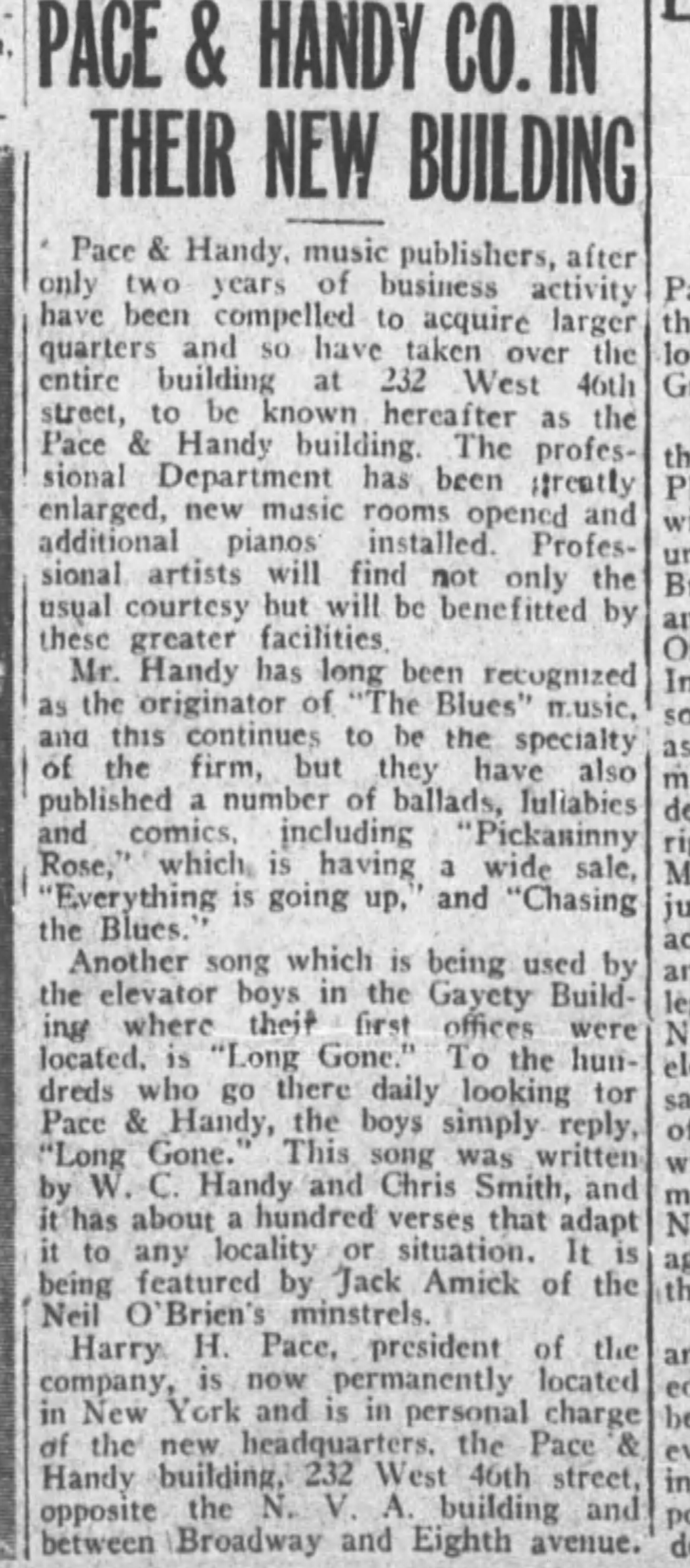Pace & Handy Music Company’s new location
One hundred years ago today … the Pace & Handy Music Company was selling sheet music from its new, expanded digs at 232 West 46th Street. Co-owners Harry Pace and WC Handy seemed to sense an expanded market for African American music alongside the expanded consumer base of African American customers. A newspaper ad (below) announced the company’s specialty as “Ballads, Blues and Comics.” This was just months before the success of Mamie Smith’s “Crazy Blues” (see our August 10 post), which was when “the music industry,” as Ann Douglas writes, “discovered the Negro as artist and consumer and it held on for dear life” (391).
At the top of the Pace & Handy advertisement is “You Can’t Keep a Good Man Down,” by Smith—called here “the first colored girl to make a Record of a popular song”—from her February recording session at Okeh Records (which we featured here).
New York Age, 14 August 1920, p. 6. Newspapers.com.
The second song listed above is none other than Handy’s landmark 1914 composition, “Saint Louis Blues,” which would soon become a jazz standard. The version referred to is that by Marion Harris, recorded April 16, 1920 for Columbia Records.
Pace & Handy 1920 sheet music for “Saint Louis Blues.” Courtesy Jazzage1920s.com.
Handy, a hugely successful and influential blues composer and musician, and Pace, songwriter and entrepreneur, had formed Pace & Handy in 1914 in Memphis to print and sell their own compositions and thus take a greater share of sales. Only two other music publishing companies owned by African Americans then existed. (See Maureen Maryanski’s article about Handy for the New York Historical Society website.) At the time, sheet music and piano rolls were more profitable than records.
In 1918, Handy and Pace moved the company to New York, into the the Gaiety Building, 1547 Broadway. Two years later they moved to the West 46th location, where they could expand their workspace and their music facilities.
New York Age, 14 August 1920, p. 1. Newspapers.com.
Notwithstanding the fact that it appears in the report above, an attempt to brand the new site as the “Pace & Handy Building” seems to have not taken.
The company also recognized that there were markets outside of New York City, and started selling through the mail.
The Topeka Plain Dealer, 10 September 1920, p. 1. Chronicling America.
Handy and Pace dissolved their partnership in 1921 when Pace left to start a record label, Black Swan.
Sources/further reading:
Douglas, Ann. Terrible Honesty: Mongrel Manhattan in the 1920s. New York: The Noonday Press, 1995.
WRITTEN BY JONATHAN GOLDMAN, AUGUST 14, 2020.
TAGS: music, sheet music, African American music, blues, black business




